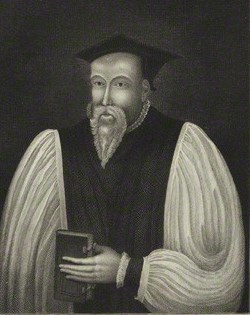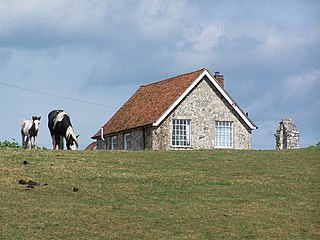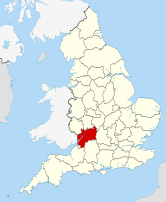| Monastery information | |
|---|---|
| Full name | Priory of St Mary |
| Order | Gilbertine |
| Established | 1350 |
| Disestablished | 1539 |
| People | |
| Founder(s) | Thomas Seymour |
| Site | |
| Location | Poulton, Gloucestershire |
| Coordinates | 51°41′56″N1°51′50″W / 51.698975°N 1.863894°W |
Poulton Priory or the Priory of St Mary was a Gilbertine priory in Poulton, Gloucestershire, England. It was founded as a chantry chapel in 1337 by Sir Thomas Seymour and became a house of Gilbertine canons in 1350. [1] [2] From 1539, with the Dissolution of the Monasteries, the priory was used as the parish church for Poulton. It was demolished in 1873. [1]

The Gilbertine Order of Canons Regular was founded around 1130 by Saint Gilbert in Sempringham, Lincolnshire, where Gilbert was the parish priest. It was the only completely English religious order and came to an end in the 16th century at the time of the Dissolution of the Monasteries. Modest Gilbertine revivals have taken place in the late 20th and early 21st centuries on three continents.

A priory is a monastery of men or women under religious vows that is headed by a prior or prioress. Priories may be houses of mendicant friars or nuns, or monasteries of monks or nuns. Houses of canons regular and canonesses regular also use this term, the alternative being "canonry".

Poulton is a village and civil parish in the English county of Gloucestershire, approximately 24 miles (39 km) to the south-east of Gloucester. It lies in the south of the Cotswolds, an Area of Outstanding Natural Beauty. In the 2001 United Kingdom census, the parish had a population of 398, increasing to 408 at the 2011 census.
A Tudor style mansion was built on the site by Sir Arthur Blomfield for the Marshall family c1897. It was later owned by James Joicey and Major Alexander Black-Mitchell. In World War II, it was used as a children's hospital.

Sir Arthur William Blomfield was an English architect. He became president of the Architectural Association in 1861; a Fellow of the Royal Institute of British Architects in 1867 and vice-president of the RIBA in 1886. He was educated at Trinity College, Cambridge, where he read Architecture.













